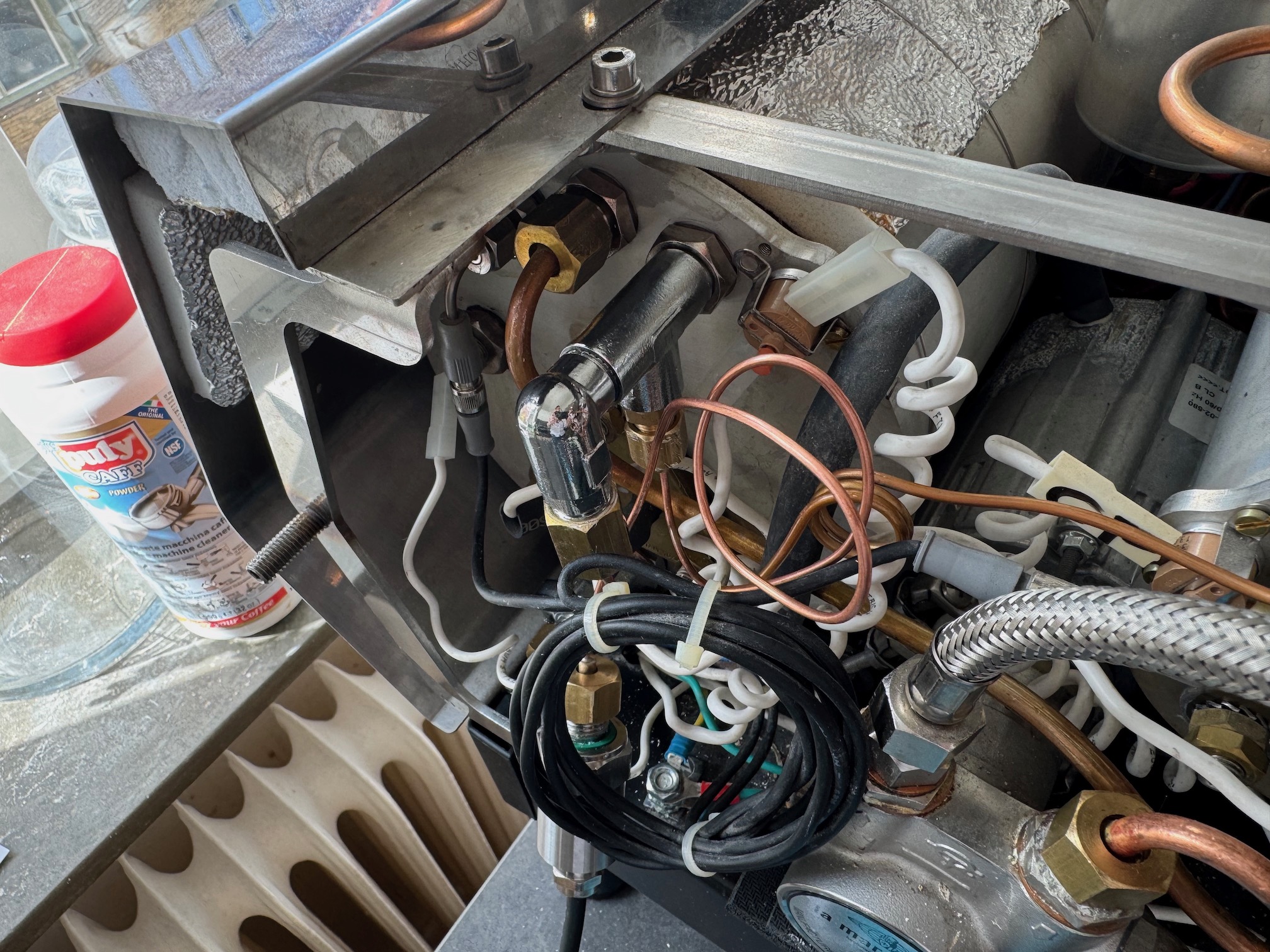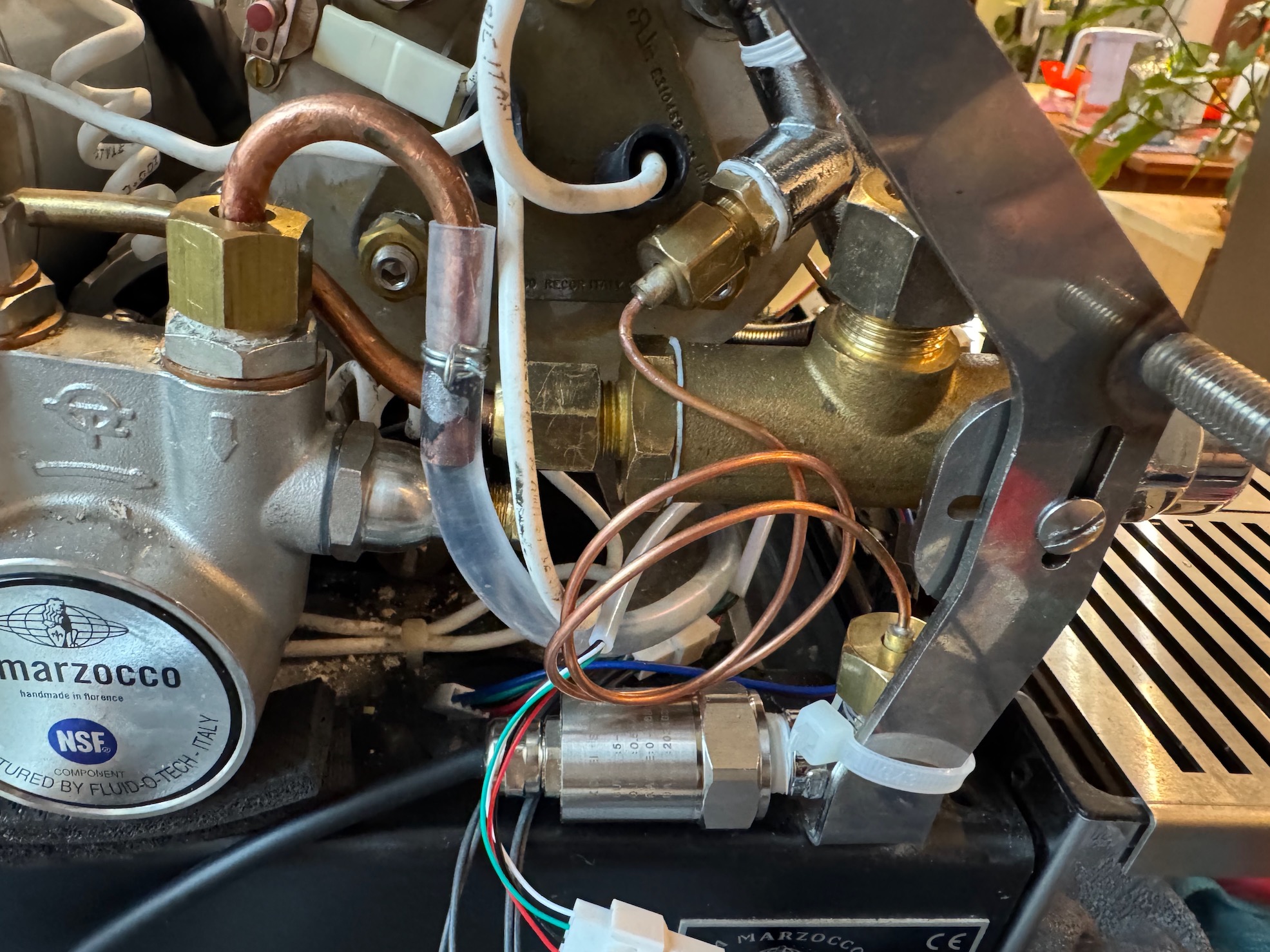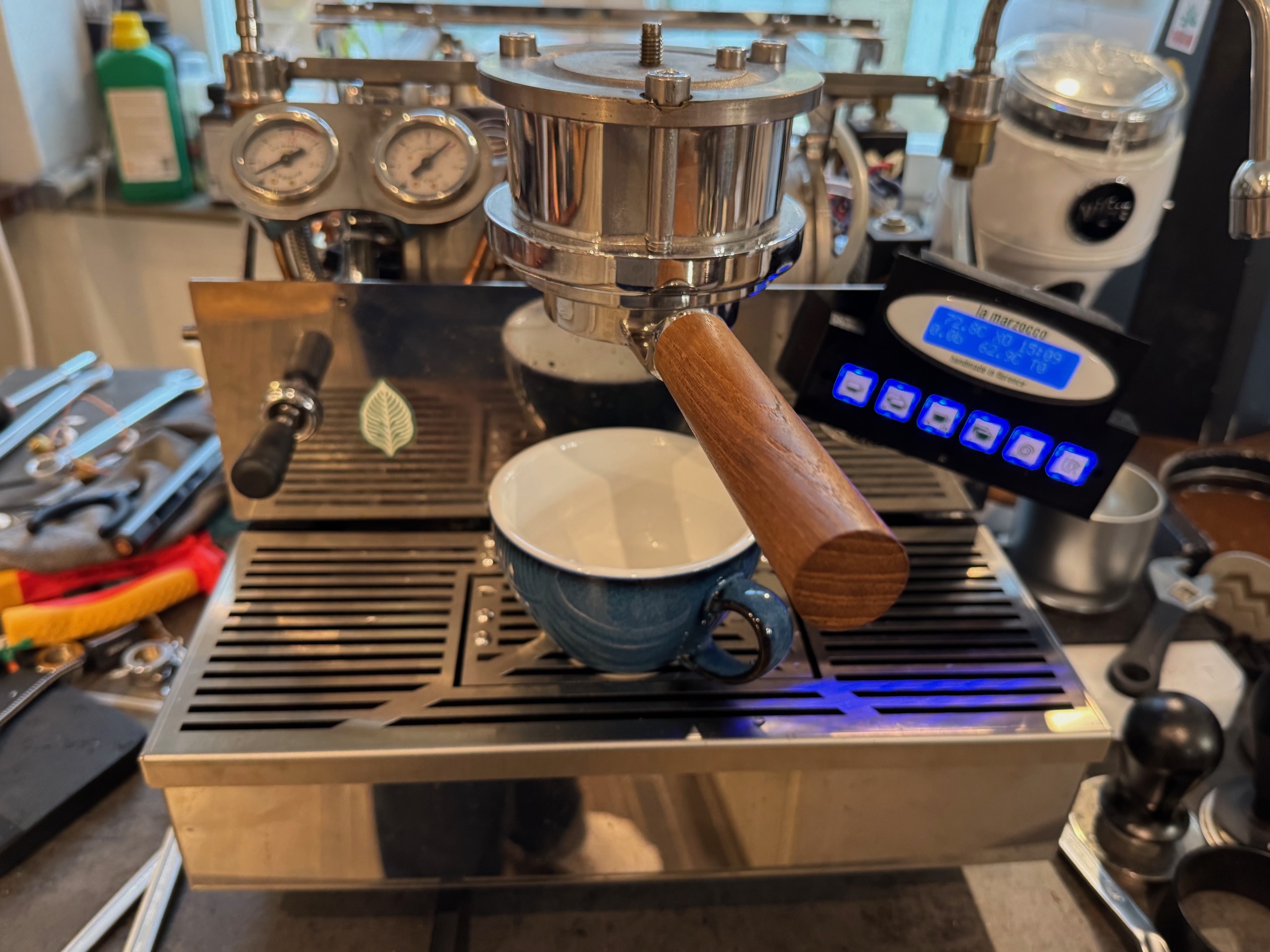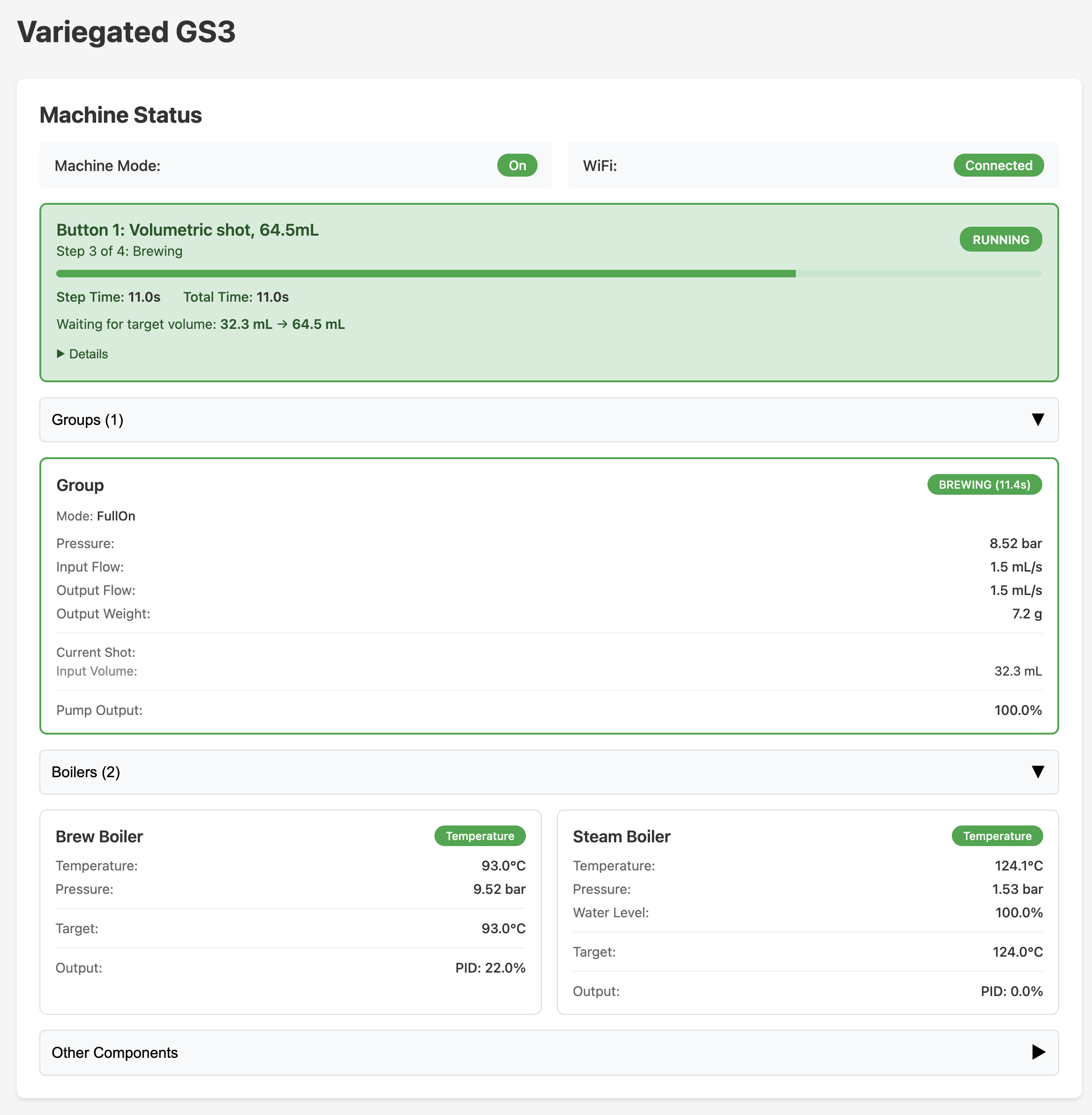2025-10-04: Sentiero
Why do I do this?
When working on a project, any project, that’s a fair question to ask. I’ve been working on espresso related hardware for years now, but I don’t think I’ve ever written about why. Looking at the time and money I’ve put into it, wouldn’t it be better to just buy a Slayer or a Strada and be done with it?
The La Marzocco Strada was named for the ’Street team’ – a team of professional baristas that helped design the machine. Their ‘why’ was clear. To help the baristas do their job - making espresso for lots of customers - better. Strada is also an apt name for the machines. They are designed to be workhorses, producing high-quality espresso, with an efficient workflow.
My why is a little different. On the one hand, I want to brew great coffee. More importantly though, to me, this is one of those situations where the journey is the destination. I like tinkering with espresso machines, making electronics, and writing firmware. I also like letting other people in on the journey.
When a road is defined not by its endpoint but by the experiences, discoveries, and transformations along the way, it’s not a strada or a via. Instead, it is a sentiero. A sentiero is not the direct road or the grand highway; it is the narrow trail that winds through unexpected terrain, guiding the traveler to notice details and perspectives that would otherwise be missed.
I’m making my GS3 into a Sentiero, and you’re welcome to join me on that trail, either in part or in full, or for that matter to blaze your own trail. All designs and firmware will be open source. If you have a GS3, following along is obviously going to be easier, but I’m trying to make this as adaptable as possible to other espresso machines as well.
Status update
I won’t reiterate too much details on the actual board, because that’s already been done in a previous entry, but I will give a short update on where I’m currently at, and where I’m going.
I received the EV1 boards a couple of weeks ago (along with new APEC SoMs), and sadly, I had made a pretty annoying mistake. I was able to rework one board to work despite it though, so I’ve been busy both validating the design, getting things working, and redesigning for an EV2 run (more on that in a future post).
I’ve also been doing some work on the hardware changes I’m planning, specifically adding pressure transducers to the steam boiler and brew boiler. It was a bit of a chore, but I managed to find decent spots to put T-connections.


As a side note, the board work just fine without any additional hardware, and even without any hardware, it does allow you to circumvent some of the more annoying aspects of the stock firmware. Specifically, I really don’t like that the machine doesn’t warm up on schedule if the tank is “empty” - even when the steam boiler is full - and that the pre-brewing cycles the solenoid (this of course has pros and cons, but I like being able to choose for myself). Of course La Marzocco could easily fix these issues in a firmware upgrade.

Getting back on track, the firmware is currently alpha quality at best, but it works well enough for me to leave the board installed in the machine and still use it. When combining the buttons and display, the web interface I’ve made and the Home Assistant integration I’ve made, I have perhaps 90% feature parity with the original controller, and of course lots of additional features not present in the original controller.

Next up hardware wise, I’m also going to be validating using the board with a gear pump (albeit without actually installing it) before I order a run of the EV2 revision, and I’ll probably install my (small) TFT display pretty soon.
More long-term, the EV2 will support using a Strada style proportional solenoid for the steam wand, and I’m also going to be making a larger touchscreen TFT module, but both of those will require me to manufacture new front panels (well, not as much of a requirement for the solenoid, but I don’t want a gaping hole in the front of the machine), so that’s definitely further away.
